Haixia Bi
SAM-UNet:Enhancing Zero-Shot Segmentation of SAM for Universal Medical Images
Aug 19, 2024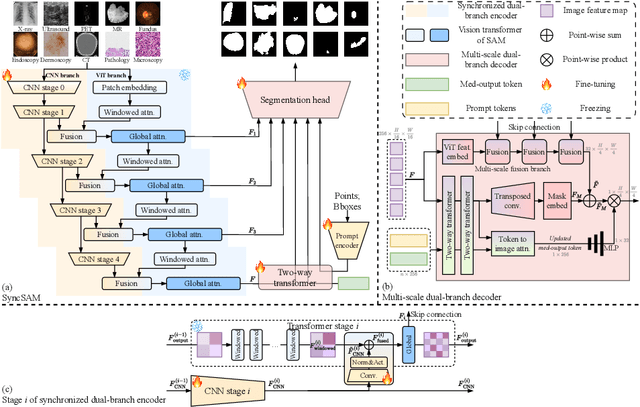
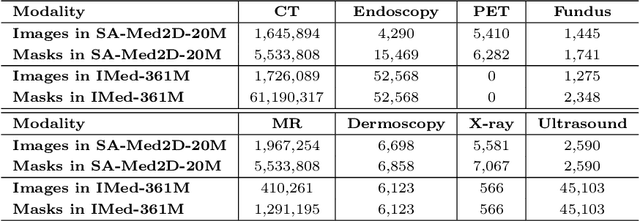

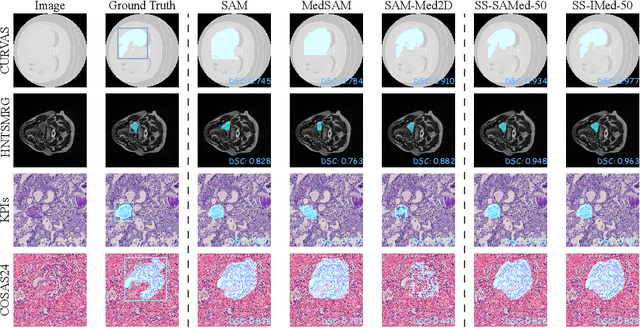
Abstract:Segment Anything Model (SAM) has demonstrated impressive performance on a wide range of natural image segmentation tasks. However, its performance significantly deteriorates when directly applied to medical domain, due to the remarkable differences between natural images and medical images. Some researchers have attempted to train SAM on large scale medical datasets. However, poor zero-shot performance is observed from the experimental results. In this context, inspired by the superior performance of U-Net-like models in medical image segmentation, we propose SAMUNet, a new foundation model which incorporates U-Net to the original SAM, to fully leverage the powerful contextual modeling ability of convolutions. To be specific, we parallel a convolutional branch in the image encoder, which is trained independently with the vision Transformer branch frozen. Additionally, we employ multi-scale fusion in the mask decoder, to facilitate accurate segmentation of objects with different scales. We train SAM-UNet on SA-Med2D-16M, the largest 2-dimensional medical image segmentation dataset to date, yielding a universal pretrained model for medical images. Extensive experiments are conducted to evaluate the performance of the model, and state-of-the-art result is achieved, with a dice similarity coefficient score of 0.883 on SA-Med2D-16M dataset. Specifically, in zero-shot segmentation experiments, our model not only significantly outperforms previous large medical SAM models across all modalities, but also substantially mitigates the performance degradation seen on unseen modalities. It should be highlighted that SAM-UNet is an efficient and extensible foundation model, which can be further fine-tuned for other downstream tasks in medical community. The code is available at https://github.com/Hhankyangg/sam-unet.
Dual-branch PolSAR Image Classification Based on GraphMAE and Local Feature Extraction
Aug 08, 2024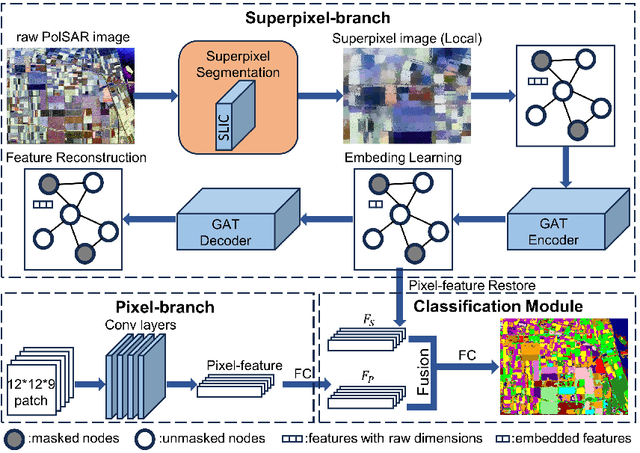

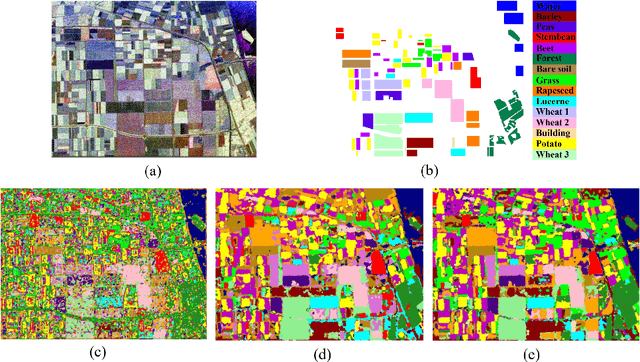
Abstract:The annotation of polarimetric synthetic aperture radar (PolSAR) images is a labor-intensive and time-consuming process. Therefore, classifying PolSAR images with limited labels is a challenging task in remote sensing domain. In recent years, self-supervised learning approaches have proven effective in PolSAR image classification with sparse labels. However, we observe a lack of research on generative selfsupervised learning in the studied task. Motivated by this, we propose a dual-branch classification model based on generative self-supervised learning in this paper. The first branch is a superpixel-branch, which learns superpixel-level polarimetric representations using a generative self-supervised graph masked autoencoder. To acquire finer classification results, a convolutional neural networks-based pixel-branch is further incorporated to learn pixel-level features. Classification with fused dual-branch features is finally performed to obtain the predictions. Experimental results on the benchmark Flevoland dataset demonstrate that our approach yields promising classification results.
PolSAR Image Classification Based on Robust Low-Rank Feature Extraction and Markov Random Field
Sep 13, 2020



Abstract:Polarimetric synthetic aperture radar (PolSAR) image classification has been investigated vigorously in various remote sensing applications. However, it is still a challenging task nowadays. One significant barrier lies in the speckle effect embedded in the PolSAR imaging process, which greatly degrades the quality of the images and further complicates the classification. To this end, we present a novel PolSAR image classification method, which removes speckle noise via low-rank (LR) feature extraction and enforces smoothness priors via Markov random field (MRF). Specifically, we employ the mixture of Gaussian-based robust LR matrix factorization to simultaneously extract discriminative features and remove complex noises. Then, a classification map is obtained by applying convolutional neural network with data augmentation on the extracted features, where local consistency is implicitly involved, and the insufficient label issue is alleviated. Finally, we refine the classification map by MRF to enforce contextual smoothness. We conduct experiments on two benchmark PolSAR datasets. Experimental results indicate that the proposed method achieves promising classification performance and preferable spatial consistency.
Polarimetric SAR Image Semantic Segmentation with 3D Discrete Wavelet Transform and Markov Random Field
Aug 05, 2020

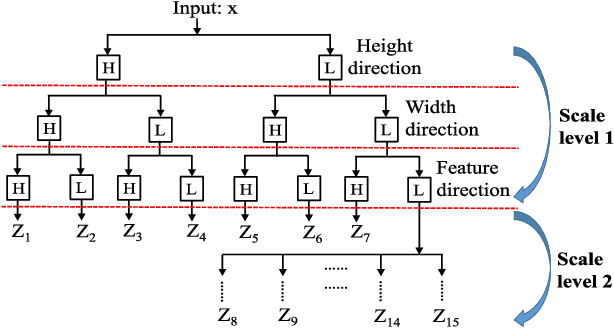

Abstract:Polarimetric synthetic aperture radar (PolSAR) image segmentation is currently of great importance in image processing for remote sensing applications. However, it is a challenging task due to two main reasons. Firstly, the label information is difficult to acquire due to high annotation costs. Secondly, the speckle effect embedded in the PolSAR imaging process remarkably degrades the segmentation performance. To address these two issues, we present a contextual PolSAR image semantic segmentation method in this paper.With a newly defined channelwise consistent feature set as input, the three-dimensional discrete wavelet transform (3D-DWT) technique is employed to extract discriminative multi-scale features that are robust to speckle noise. Then Markov random field (MRF) is further applied to enforce label smoothness spatially during segmentation. By simultaneously utilizing 3D-DWT features and MRF priors for the first time, contextual information is fully integrated during the segmentation to ensure accurate and smooth segmentation. To demonstrate the effectiveness of the proposed method, we conduct extensive experiments on three real benchmark PolSAR image data sets. Experimental results indicate that the proposed method achieves promising segmentation accuracy and preferable spatial consistency using a minimal number of labeled pixels.
 Add to Chrome
Add to Chrome Add to Firefox
Add to Firefox Add to Edge
Add to Edge